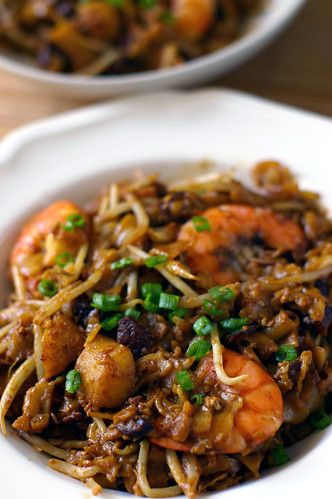Singapore being a busy city, we wonder how many of you really take note of those places that held music, dances and even the display of Singapore's very own art. :D For most, the first thing that comes to mind about the arts would be the Esplanade!
 However, do not forget our first concert hall! The Victoria concert hall that goes way back in Singapore's History. Not only that, we have our Singapore Arts museum too that was built in 1996, featuring 7750 of Singaporean and Southeast Asia Arts.
However, do not forget our first concert hall! The Victoria concert hall that goes way back in Singapore's History. Not only that, we have our Singapore Arts museum too that was built in 1996, featuring 7750 of Singaporean and Southeast Asia Arts. The National Arts Council organizes the Singapore Arts Festival (SAF) in the city every year. SAP is normally held in the middle of the year and last for about a month. SAF includes events like theatre arts, music, dance, visual arts and graffiti arts. SAP started since 1977 as a national arts festival to celebrate local arts from the diverse communities in Singapore.
The National Arts Council organizes the Singapore Arts Festival (SAF) in the city every year. SAP is normally held in the middle of the year and last for about a month. SAF includes events like theatre arts, music, dance, visual arts and graffiti arts. SAP started since 1977 as a national arts festival to celebrate local arts from the diverse communities in Singapore.

In order to enhance the talents of Singapore's Youth, various schools like Nan Yang Academy of Fine Arts (NAFA), Lasalle College of The Arts, The Stamford Arts Centre are built.
CULTURE, Food & Language

Moving on, we have the Cultures in Singapore.A wonderful blend of cultures as diverse as Malay, Chinese, Indian, and European, there are also different religions depending on their background or individual choice. The Chinese are mostly Buddhists, Christians, and Catholics. The Malays are predominantly Muslims, while the Indians in Singapore are largely Hindus. Not forgetting there are also the Peranakans who have been living in Singapore in the early days. Nonetheless, there are people who are free-thinkers too.
With the various races, Singapore has several ethnic districts such as Arab Street/Kampong Glam, Little India, Chinatown and Katong.

When we talk about culture, it will always go hand in hand with the various types of popular dishes in paired with the different types of races. These are some of the "Must Try" and top 10 popular dishes the locals prefer
1) Chilli crab

2) Hainanese Chicken rice

3) SATAY

5) Bak Kut Teh

6) Roti Prata

7) Rojak
8) Fish Head Curry

9) Char Kway Teow

10) Fried Carrot Cake

The language used commonly to communicate in Singapore is English. The various also means that there are various languages like Malay, Mandarin, and Tamil. However, the dialect popularity known as 'Singlish' (a fascinating mix of English with dialects of Singapore thrown in for good measure) is being widely used in Singapore too.
Bukit Batok Memorial
Lastly, for heritage, we shall bring you through 3 places in Singapore.

Bukit Batok Meomorial, is a memorial for the Japanese dead. Bukit Batok was chosen as the site because it overlooked Bukit Timah, where the fiercest fighting took place.
The Japanese memorial was named the Syonan Chureito. Built by 500 Allied Prisoners-of-War (PoWs), was unveiled and dedicated on Thursday, 10 September 1942.
The Allied PoWs seeked for the Japanese's permission to build a Christian monument to honour their own war dead. The ashes of the dead are then placed in a wooden box wrapped in a white cloth, placed in front of the altar in Saint Andrew's Cathedral and later transferred to the Allied memorial when it was completed.
Then after, both memorials were demolished by the Japanese before the British returned.
Changi Beach

The water's edge on this stretch of Changi Beach was where 66 Chinese male civilians killed by Japanese hojo kempei (auxiliary military police) firing squads on 20 February, 1942. The 66 Chinese males were among tens of thousands who lost their lives during the Japanese Sook Ching operation to who were suspected to be anti-Japanese elements within Singapore's Chinese population between 18 February to 4 March 1942.
Also, Tanah Merah Besar Beach, one of the most heavily used killing grounds was where over a thousand Chinese men and youths lost their lives.
Geylang Serai

The name 'Serai' was said to derived from a fragrant lemon grass factory "Kilang Serai located east of Kallang River which was grown as a cash crops by the malays who were resettled from the Singapore River mouth in the 18140s. It was then a social centre of the malays in singapore.
Different ethnic groups lived in segregated settlements created by the British colonial authority. As a result, when urban renewal scheme in the early 1969s came out. the Malay community saw it as a threat to their established way of life.Due to the riots on 21 July 1964, Malays in Geylang Serai stood by their conviction towards multi-racialism but they responded well to the Goodwill Committees and restored racial Harmony. Many Malay families now live in the surrounding public housing estates in Marine Parade, Chai Chee, Geylang Bahru and Bedok.
Some of the street names in Geylang Serai such as Kampong Wak Tanjong, Lorong Enhku Aman, Jalan Afifi, Lorong Abu Kaseh, Jalan Alsagoff and Jalan Eunos were named after prominent community leaders. Also,the presence of mosques reflects the Malay-Muslim character of Geylang Serai. It has retained its unique character and continues to attract locals and tourists.






